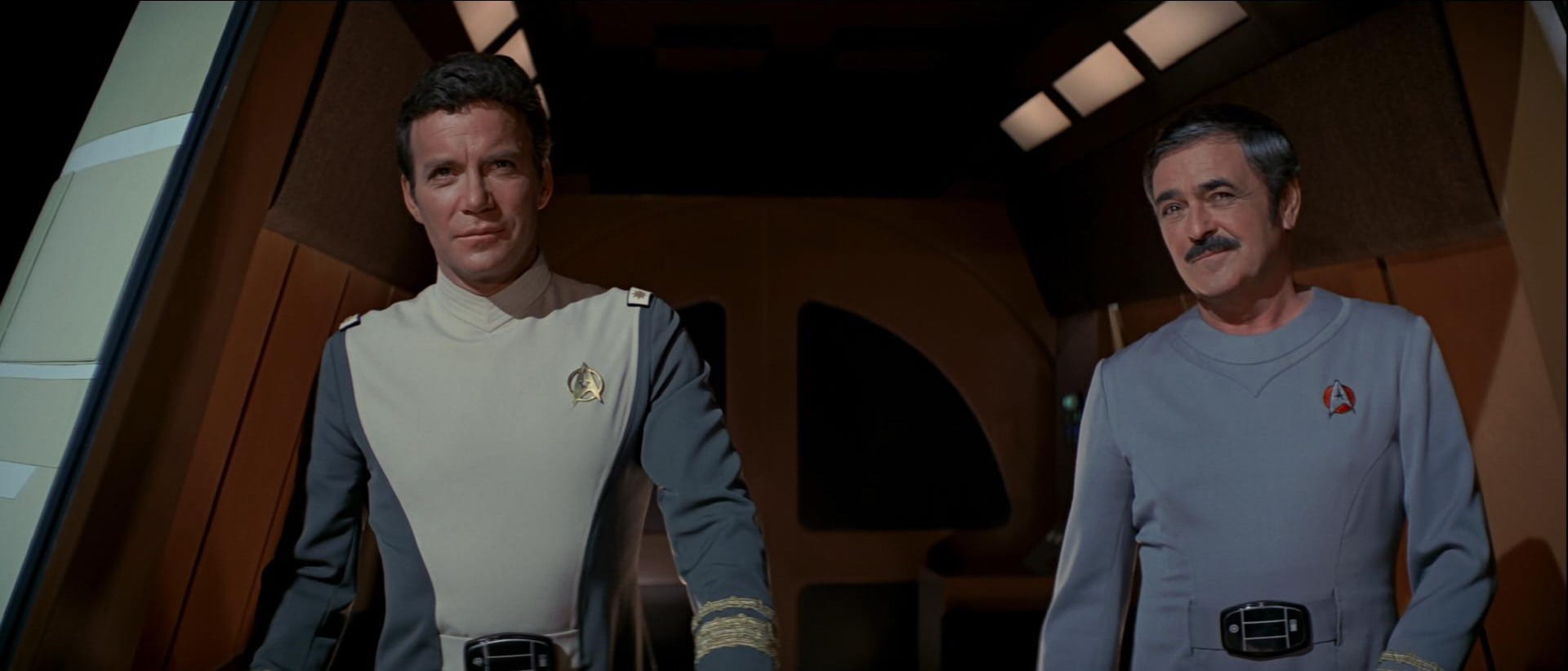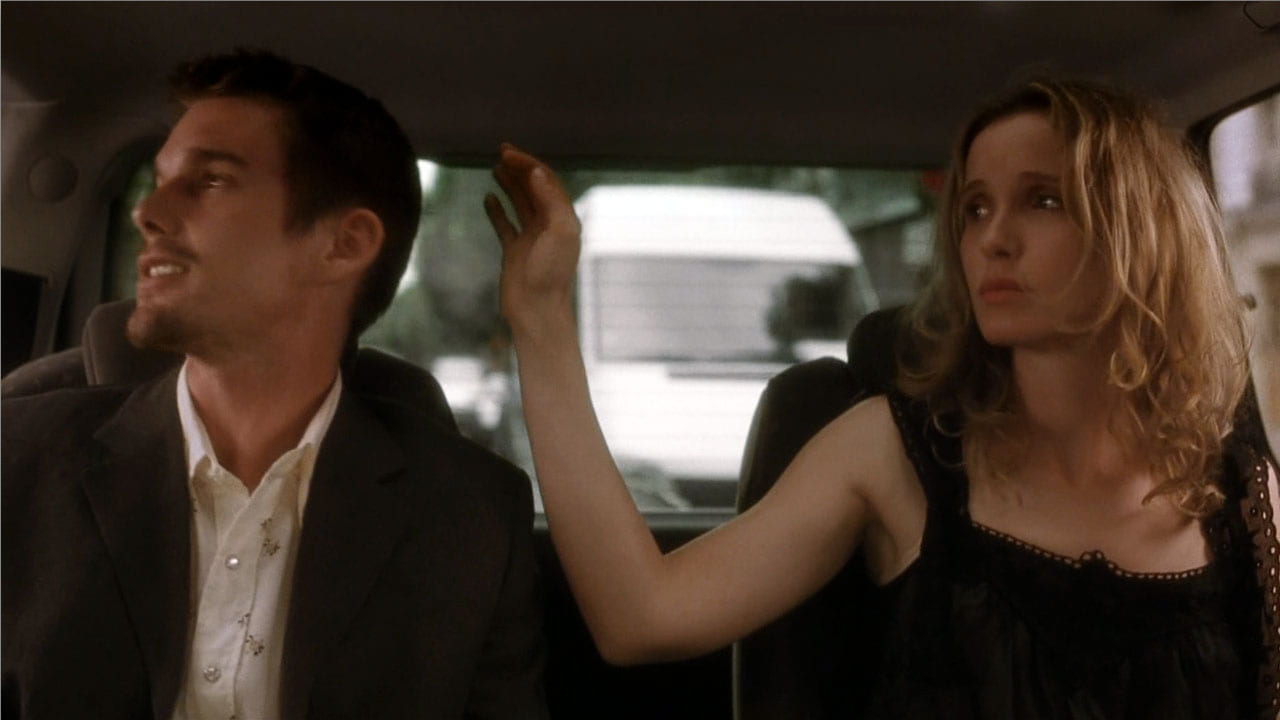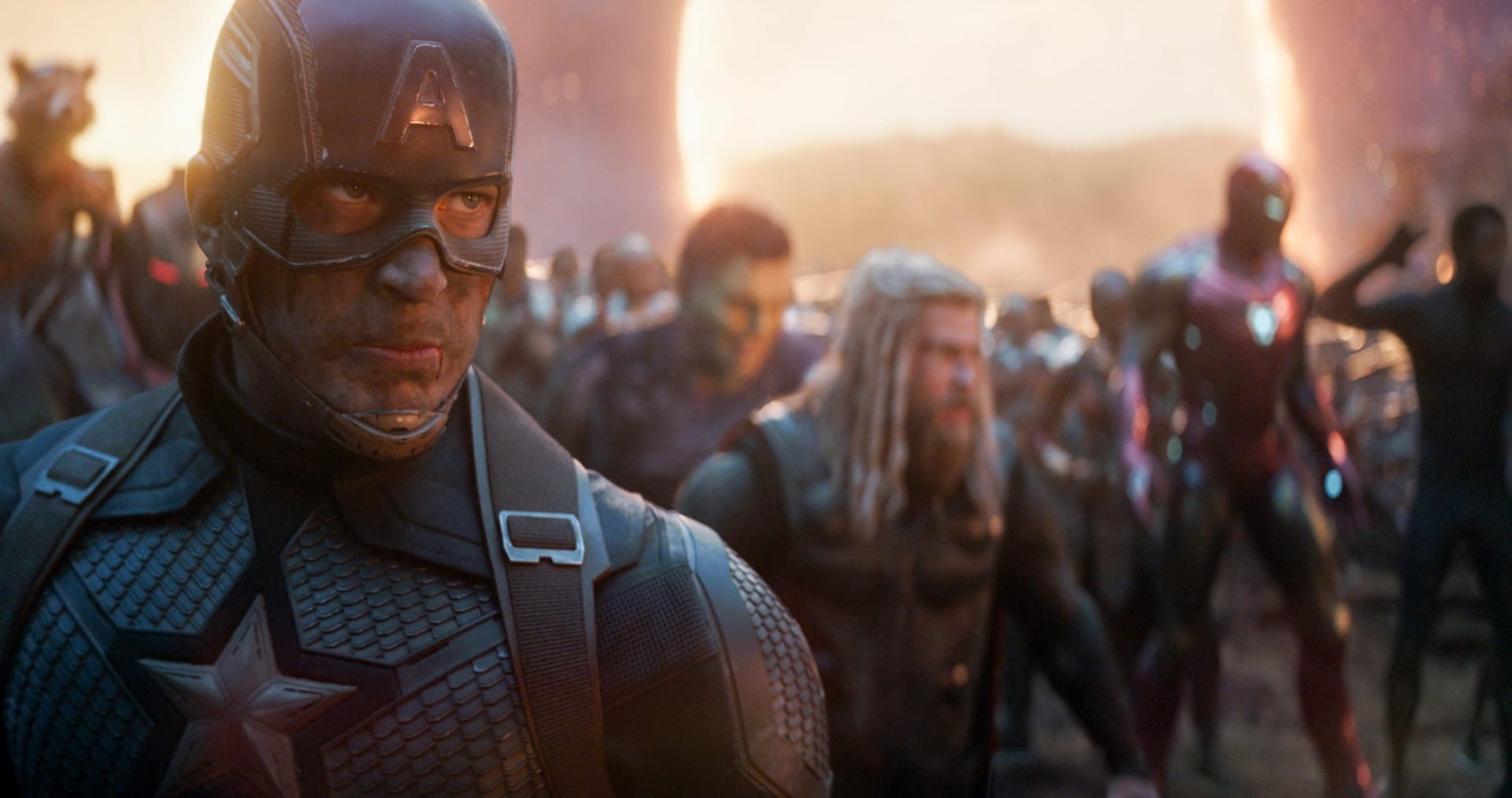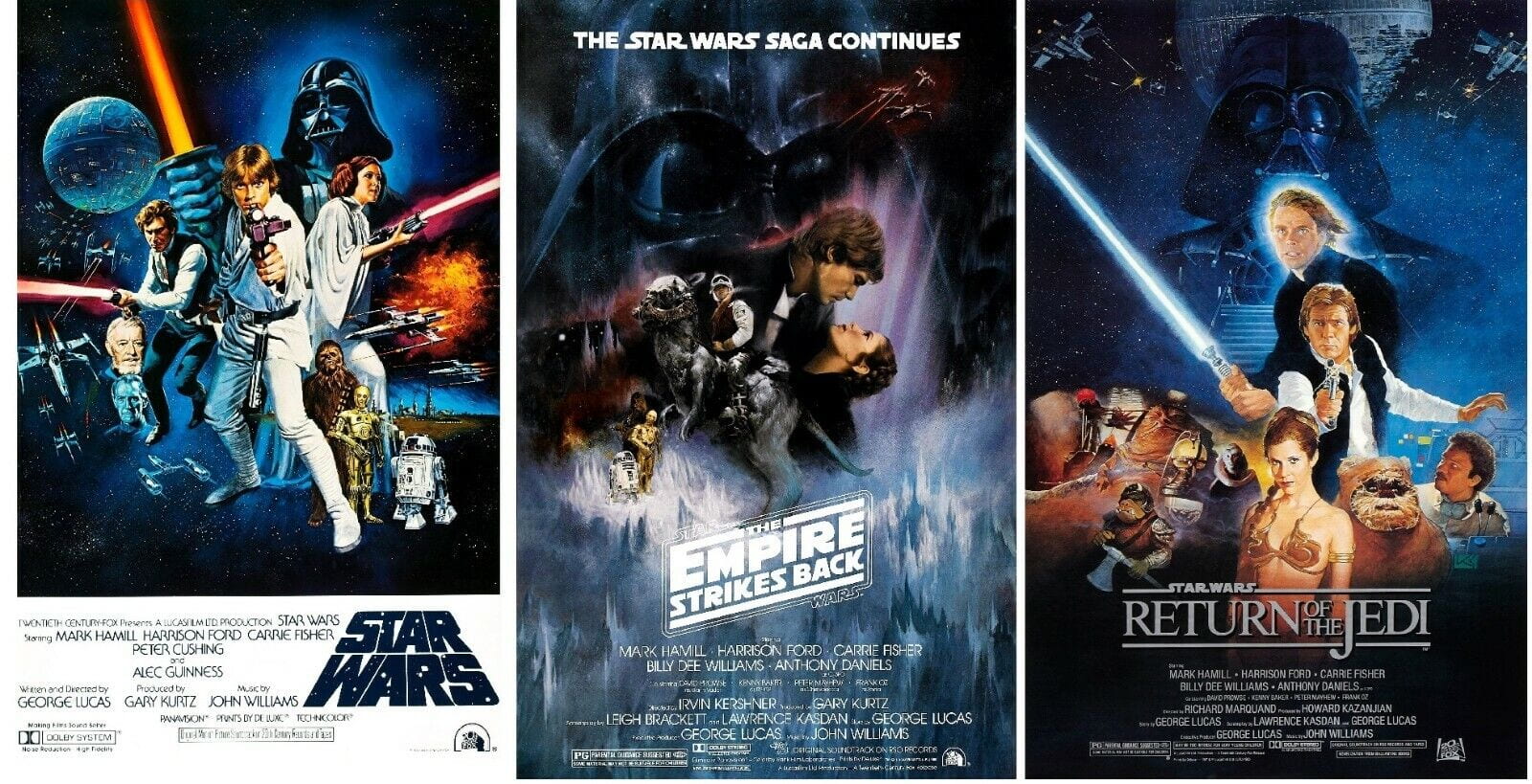
Kirk and Scotty in Star Trek: The Motion Picture
The first instance of the kind of elegiac sequel storytelling that happens within the Hollywood blockbuster franchise that primarily comprises this canon of films came in the form of one of the longest running science fiction franchises, Star Trek. Almost a decade after the cancellation of the original series in 1969, Paramount Pictures and creator Gene Roddenberry began talks about returning to the Enterprise, a return that was first conceived of as a movie with the original cast returning, then as a show with most of the original cast on board, then, following the success of Close Encounters of the Third Kind, a promising pilot script was expanded upon for a film starring every member of the original cast including prior hold-out Leonard Nimoy. With stalwart director Robert Wise at the helm, the Enterprise and her crew launched a mission to boldly go from television to film. The transition brought with it opportunities to expand upon the storytelling and aesthetics of the original tv series as well as the cast and crew of the Enterprise. With Star Trek: The Motion Picture, Wise dedicated a lengthy sequence to revealing the newly updated Enterprise design in loving detail as the expanded orchestral score signaled the triumphant return of the iconic ship and its crew. Indeed, audiences are placed in the crew’s position as they too marvel at the increased detail afforded by the 8-foot long model and higher fidelity film capture and projection. Such a sequence would feel overdone in a tv show, a medium that requires to-the-point storytelling and resists such fanfare as a matter of course. But on the big screen and after a decade lacking new filmed Star Trek stories, such a scene cements the story being told as feeling appropriate to its medium, larger than life and able to indulge in spectacle for spectacle’s sake.
Not only was there a new version of the Enterprise in The Motion Picture, but there were also a few new cast members. Persis Khambatta played Ilia and Stephen Collins played Decker, two new crew members of the Enterprise around whom some of the story’s important machinations happen. Ilia, in particular, becomes a central character when she becomes somewhat possessed by the entity V’Ger (later revealed to be the Voyager space probe that had developed delusions of godhood after hundreds of years of neglect in the emptiness of space). In this way, she and Decker, who share a romantic interest unlike any of the returning crew, become entrypoints for audience members not familiar with the original series and its cast. Both younger than the original crew (each of whom was closer to 50 than 40 and not particularly in line with the younger casts of movies like Star Wars, Alien, or Close Encounters of the Third Kind), Ilia and Decker were crafted to appeal to wider audiences and provide some sexual chemistry. However, neither of them make it beyond the events of this film and the next film, Wrath of Khan, brought in Kirstie Alley as Saavik, a Vulcan protégé to Nimoy’s Spock, and Merritt Butrick as David Marcus, Kirk’s son. Again, these two new cast members act as entry points for new audience members but neither threatens to take over for the character for which they are echoes. Indeed, David Marcus dies in the next film and Saavik eventually disappears unceremoniously from the later films after being recast in the next film.

Kirk and Spock in Star Trek: The Wrath of Khan
However, Wrath of Khan, like The Motion Picture, is again thematically concerned with the past returning to wreak havoc in the present. This time it’s Ricardo Montalban’s titular Khan who returns from his first appearance in 1967’s “Space Seed” episode of The Original Series. In that episode he was revealed to be a genetically modified warlord from the late twentieth century and was eventually exiled to a remote, deserted planet with his followers. In Wrath of Khan, he finds out about the Genesis technology Starfleet is developing to terraform planets and wants to use it to wipe out Earth as vengeance for his treatment. Montalban’s performance as a man over 200 years old yet genetically modified to remain in the prime of his life enables him to play both the wizened old man and the vivacious action villain at once. The character’s presence at three periods of Star Trek’s history, including its pre-history involving Eugenics Wars, also imparts onto him the quality of The Life and Death of Colonel Blimp’s Clive Candy (Roger Livesey) who similarly sees three different wartimes in the three acts of that film. What Colonel Blimp achieves with makeup to age Candy Star Trekachieves first with drawings that captured the youthfulness of the Khan character in the late twentieth century, then with Montalban’s two performances separated by 15 years in both real time and story time. Like Colonel Blimp, Khan’s presence here enables the film’s writers (Nicholas Meyer, Harve Bennett, and Jack B. Sowards), director (Meyer), and actors to craft a story about past injustices coming back to haunt people who were trying to do the right thing in a tough situation and to reflect on the changing nature of war. Though Star Trek has always had a semi-utopian impulse, its stories still need conflict and drama and its universe can plausibly contain a villain like Khan, particularly when it casts that villain as a remnant of an earlier, more violent time. By bringing Khan back again and giving him a mission to exact revenge on Kirk and Star Fleet, the Star Trek franchise asserts that the stories contained in the Original Series’ episodes were not as self-contained as they seemed, that what happened in the past has consequences for the present and that the end of an episode isn’t the end of a story.
As the film series continued, the actors from the original crew continued to stick around and age along with their characters. The last film to feature all of the crew was 1991’s Star Trek VI: The Undiscovered Country, a Cold War allegory about what might happen when the Berlin Wall fell and the people living on either side were unwilling to give up their long-simmering resentment of each other and a movie about whether the old crew of the Enterprise is outmoded in this new galactic configuration. By the time the film came out much of the cast was nearing or over 60 years old and feeling distinctly out of place in a film landscape dominated by the likes of Arnold Schwarzenegger and Tom Cruise. In this way, the franchise’s continued repetition and replication across media enabled something somewhat unique as it gave a cast full of near-geriatrics a long lasting and successful action sci-fi career. Children who were enamored of Kirk and Spock on TV in the late 60s could bring their kids to see the final adventures of the crew nearly three decades later. Of course, this wasn’t the end of Star Trek, as three of this crew returned in the next movie to hand-off the franchise officially to the crew of The Next Generation in Star Trek Generations, a film that featured Kirk’s onscreen death. And Nimoy eventually reprised the role of Spock in the 2009 reboot/elegiac sequel thanks to some tricky plot maneuvering involving alternate dimensions allowing the original Spock to meet and mentor Zachary Quinto’s rebooted, much younger version of the character. Star Trek predates the franchise model that came to account for a large number of Hollywood productions and its initial steps outside the original series were proto-elegiac sequel films that paved the path for older stars to return to famous characters and filmmakers to revive (semi)dormant intellectual properties in an attempt to retain original fans and make new ones.

Heather Langenkamp plays herself in Wes Craven’s New Nightmare
As the Star Trek movies continued throughout the 80s, another pair of franchises were started and rapidly expanded within a decade to have half a dozen entries each: Halloween and A Nightmare on Elm Street. These two supernatural slasher franchises fed on a similar formula of introducing a new crop of teenaged victims in each film to be soon chopped up, impaled, and otherwise dispatched by Michael Myers (various actors) or Freddy Krueger (Robert Englund). While the Nightmare films were able to keep things relatively fresh given Krueger’s dream powers granting filmmakers involved in the franchise opportunities to change things up with some regularity, the Halloween films soon had to take absurd narrative turns involving druids and cults to keep that franchise running. Eventually, however, both franchises ran out of steam and by the middle of the 1990s the two franchises were looking for another shot of reinvigorating creativity. 1994 saw the release of Wes Craven’s New Nightmare, a movie that brings back writer/director Wes Craven and actor Heather Langenkamp to play themselves in a meta-story about Freddy haunting the cast of the original film into making a new film where he’d be scary again instead of silly. Similarly, in 1998 Jamie Lee Curtis returned to the Halloween franchise for the first time since Halloween II in a film that ignored all of the films that she wasn’t in, Halloween H20: 20 Years Later.





